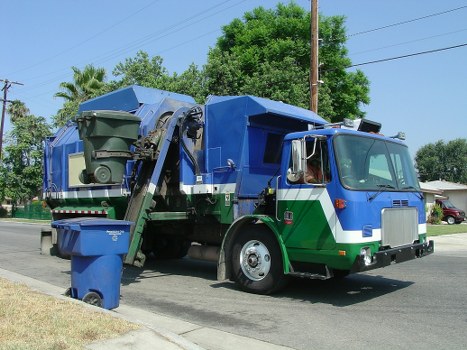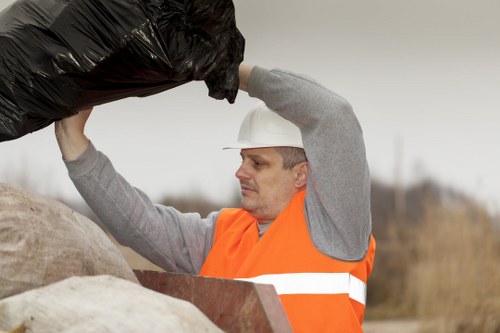Construction Waste Clearance in Belmont
Managing construction waste is a critical aspect of any building project. In Belmont, effective construction waste clearance ensures that sites remain safe, compliant, and environmentally friendly. Whether you're undertaking a major renovation or a small-scale build, understanding the best practices for waste clearance can save you time, money, and resources.
Construction waste can range from concrete, bricks, and wood to metals, plastics, and hazardous materials. Proper disposal not only benefits the environment but also enhances the overall efficiency of the construction process. In Belmont, several services specialize in efficient waste management solutions tailored to the needs of local builders and contractors.
Implementing a robust waste clearance strategy is essential for maintaining project timelines and adhering to local regulations. This article delves into the various aspects of construction waste clearance in Belmont, providing insights into methods, benefits, and services available to streamline your construction projects.

The Importance of Construction Waste Clearance
Effective waste clearance plays a pivotal role in the success of any construction project. By systematically removing debris and surplus materials, construction sites can operate more smoothly and safely.
One of the primary benefits is enhanced site safety. Accumulated waste can pose hazards to workers, increasing the risk of accidents and injuries. Moreover, cluttered sites can impede the movement of machinery and personnel, leading to inefficiencies.
Furthermore, proper waste management aids in regulatory compliance. Belmont has specific guidelines and regulations governing the disposal of construction waste. Adhering to these laws not only avoids legal repercussions but also fosters a reputation of responsibility and sustainability.

Types of Construction Waste
Construction waste encompasses a wide variety of materials, each requiring specific disposal methods. Understanding these types is crucial for effective clearance.
Inert Waste
Inert waste includes materials like concrete, bricks, and tiles. These materials typically do not decompose and can be recycled or repurposed in various construction applications.
Non-Inert Waste
Non-inert waste refers to organic materials, plastics, and other items that can decompose or require special handling due to their potentially hazardous nature.
Hazardous Waste
Hazardous waste includes substances like asbestos, lead-based paints, and certain solvents. These materials demand stringent disposal procedures to prevent environmental contamination and health risks.

Effective Waste Clearance Methods
Implementing efficient waste clearance methods can significantly impact the success of construction projects. Here are some commonly employed strategies in Belmont:
- Segregation at Source: Separating waste materials during the construction phase facilitates easier recycling and disposal.
- Recycling and Reuse: Utilizing recycled materials reduces the need for new resources, promoting sustainability.
- Hazardous Waste Management: Specialized handling and disposal procedures ensure that hazardous materials are managed safely.
- Regular Site Cleanup: Maintaining a clean site minimizes hazards and enhances operational efficiency.

Choosing the Right Waste Clearance Service
Selecting a reliable waste clearance service in Belmont is essential for ensuring that your construction project meets all regulatory and environmental standards.
Experience and Expertise
Choose services with a proven track record in construction waste management. Experienced providers are better equipped to handle diverse waste types effectively.
Comprehensive Services
Opt for companies that offer a full range of services, from waste collection and transportation to recycling and disposal. This ensures a seamless waste management process.
Compliance with Regulations
Ensure that the service provider adheres to all local regulations and environmental guidelines. This not only ensures legal compliance but also promotes sustainable practices.
Cost-Effectiveness
Consider the cost of services relative to the benefits they offer. A cost-effective solution should provide quality service without compromising on compliance or efficiency.

Benefits of Professional Waste Clearance
Engaging professional waste clearance services offers numerous advantages:
- Time Savings: Professionals handle waste removal swiftly, allowing construction activities to proceed without delays.
- Safety: Proper waste management reduces the risk of accidents and ensures a safer working environment.
- Environmental Protection: Effective recycling and disposal methods minimize the environmental footprint of construction projects.
- Regulatory Compliance: Professional services ensure adherence to local laws, avoiding potential fines and legal issues.
- Cost Efficiency: By reducing waste volume and promoting recycling, overall project costs can be minimized.
Steps to Effective Waste Clearance
Implementing a structured approach to waste clearance can enhance the efficiency of your construction project. Here are the key steps:
- Assessment: Evaluate the types and quantities of waste generated during the project.
- Planning: Develop a waste management plan outlining collection, segregation, and disposal methods.
- Implementation: Execute the plan by organizing waste collection schedules and assigning responsibilities.
- Monitoring: Regularly review the waste management process to identify areas for improvement.
- Adjustment: Modify the plan as needed to adapt to changes in the project or regulations.
Environmental Impact of Poor Waste Management
Neglecting proper waste clearance can have severe environmental consequences:
Soil and Water Contamination
Improper disposal of hazardous materials can lead to soil and water contamination, affecting local ecosystems and communities.
Air Pollution
Decomposing waste can release harmful gases into the atmosphere, contributing to air pollution and adverse health effects.
Resource Depletion
Failing to recycle or reuse materials results in the unnecessary depletion of natural resources, exacerbating environmental degradation.
Increased Greenhouse Gas Emissions
Waste decomposition in landfills produces greenhouse gases like methane, which contribute to global warming and climate change.
Regulatory Framework in Belmont
Belmont has established a comprehensive regulatory framework to govern construction waste management. Understanding these regulations is essential for compliance and sustainable practices.
Local Waste Management Policies
The local government in Belmont has specific policies that dictate the proper handling, segregation, and disposal of construction waste. These policies aim to minimize environmental impact and promote recycling.
Permits and Licensing
Construction projects may require permits for waste disposal. Ensuring that all necessary licenses are obtained is crucial for legal compliance.
Enforcement and Penalties
Non-compliance with waste management regulations can result in hefty fines and legal actions. It's imperative to adhere to all guidelines to avoid such repercussions.
Innovations in Construction Waste Management
The construction industry is continually evolving, with new technologies and methods emerging to enhance waste management practices.
Advanced Recycling Techniques
Innovative recycling methods enable the efficient processing of diverse waste materials, reducing the reliance on landfills and promoting the reuse of resources.
Digital Waste Tracking
Utilizing digital tools to track waste generation and disposal helps in monitoring compliance and optimizing waste management processes.
Green Building Practices
Incorporating green building principles focuses on sustainability, including the reduction of waste through thoughtful design and material selection.
Automated Waste Sorting
Automation in waste sorting enhances the accuracy and speed of segregation, ensuring that recyclable materials are efficiently processed.
Case Studies: Successful Waste Clearance in Belmont
Examining successful waste clearance projects in Belmont provides valuable insights and best practices that can be replicated in future endeavors.
Project A: High-Rise Construction
This project implemented a comprehensive waste management plan that included real-time tracking and efficient recycling processes, resulting in a significant reduction in waste sent to landfills.
Project B: Residential Development
By partnering with local recycling centers, this development achieved a high rate of material reuse, promoting sustainability and reducing overall project costs.
Project C: Commercial Renovation
Utilizing advanced waste sorting technologies, this renovation project minimized environmental impact while ensuring compliance with local regulations.
Challenges in Construction Waste Clearance
Despite the benefits, several challenges can hinder effective waste management in construction projects.
Cost Constraints
Budget limitations can restrict the implementation of comprehensive waste management plans, leading to inadequate disposal practices.
Lack of Awareness
Insufficient knowledge about best practices and regulatory requirements can result in improper waste handling and non-compliance.
Logistical Issues
Coordinating the collection, transportation, and disposal of waste can be complex, particularly for large-scale projects with diverse waste types.
Market Demand for Recycled Materials
The availability and demand for recycled materials can influence the effectiveness of recycling efforts, impacting overall waste reduction goals.
Strategies to Overcome Challenges
Addressing the challenges in construction waste clearance requires strategic planning and proactive measures.
- Training and Education: Providing training programs for workers enhances awareness and promotes adherence to best practices.
- Budget Allocation: Allocating sufficient funds for waste management ensures that appropriate disposal methods are implemented.
- Efficient Logistics: Streamlining the logistics of waste collection and transportation enhances efficiency and reduces operational burdens.
- Partnerships: Collaborating with recycling facilities and waste management companies fosters a more effective waste clearance process.
Future of Construction Waste Clearance in Belmont
The future of waste management in Belmont is poised for significant advancements, driven by technological innovations and increasing environmental awareness.
Sustainable Practices
Emphasis on sustainability will continue to shape waste management strategies, promoting the use of eco-friendly materials and recycling practices.
Technological Integration
Integrating technology such as AI and IoT will enhance waste tracking, sorting, and management, leading to more efficient processes.
Policy Enhancements
Anticipated policy updates will likely focus on stricter regulations and incentives for sustainable waste management practices.
Community Involvement
Engaging the community in waste management initiatives fosters collective responsibility and supports broader environmental goals.
Conclusion
Construction waste clearance is an indispensable component of successful building projects in Belmont. By adopting effective waste management strategies, adhering to regulations, and leveraging professional services, construction projects can achieve enhanced efficiency, safety, and environmental sustainability.
Don't let construction waste hinder your project's success. Contact us today to learn how our expert waste clearance services in Belmont can help streamline your construction process and promote a greener future.